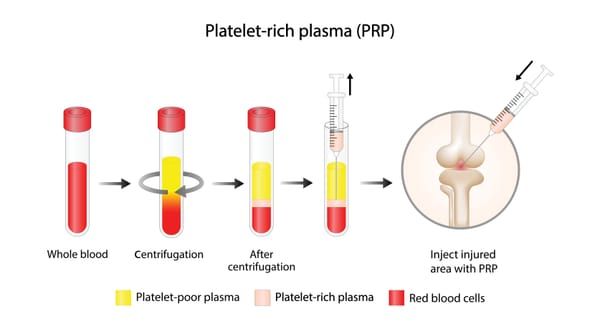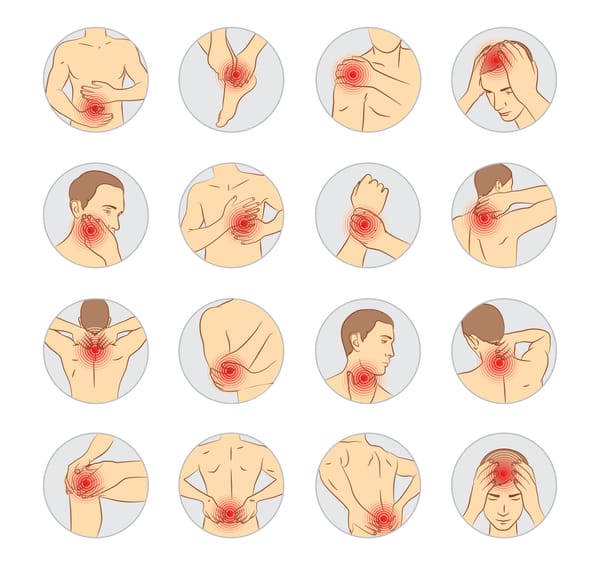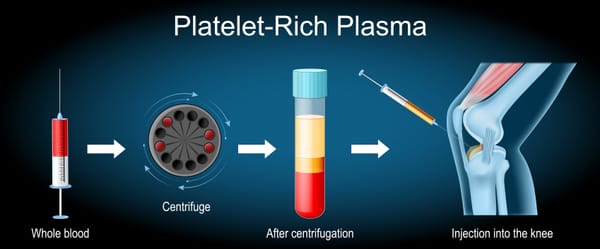Minimally Invasive Facet Fusion for Facetogenic Pain: A Targeted Solution for Chronic Lower Back Pain

Chronic lower back pain can significantly disrupt daily life, and for many, the source of this discomfort lies in the facet joints of the spine. Facetogenic pain, caused by inflammation, degeneration, or injury to these small joints, can make movements like bending, twisting, or standing painful. When conservative treatments such as physical therapy, medications, or injections fall short, minimally invasive facet fusion offers a promising surgical option to stabilize the affected joints and provide lasting relief. In this blog post, we’ll explore what facetogenic pain is, how minimally invasive facet fusion works, and what patients can expect, all explained clearly for a general audience.
Understanding Facetogenic Pain
Facet joints, also known as zygapophyseal joints, are small, paired joints located at the back of each vertebra in the spine, including the lumbar spine (lower back, L1-L5). These joints, lined with cartilage and surrounded by a capsule, enable movements like bending and twisting while providing spinal stability. Pain-sensitive nerves, called medial branches, transmit signals when the facet joints are irritated or damaged.
Facetogenic pain occurs when these joints become inflamed, degenerated, or injured, causing localized or radiating discomfort in the lower back. It’s estimated to account for 15-45% of chronic lower back pain cases, per a 2020 study in Pain Physician, and is often misdiagnosed as discogenic pain or sacroiliac dysfunction.
Causes of Facetogenic Pain
Facetogenic pain can result from various factors:
- Osteoarthritis: Cartilage wear leads to bone-on-bone friction, inflammation, or bone spurs (osteophytes).
- Trauma: Injuries from whiplash, falls, or heavy lifting can strain the facet joints or their capsules.
- Repetitive Stress: Prolonged sitting, poor posture, or repetitive bending/twisting (e.g., in sports or manual labor) overloads the joints.
- Synovial Cysts: Fluid-filled sacs in the joint can compress nearby nerves.
- Spinal Conditions: Spondylolisthesis (vertebra slippage) or scoliosis increases stress on facet joints.
- Post-Surgical Changes: Lumbar fusion can overload adjacent facet joints, leading to degeneration.
Risk factors include aging (facet degeneration increases after age 40), obesity, sedentary lifestyles, or occupations involving repetitive spinal movements.
Symptoms of Facetogenic Pain
Facetogenic pain has distinct characteristics:
- Localized Lower Back Pain: Aching, burning, or sharp pain in the lower back, often on one or both sides of the spine.
- Pain with Movement: Worsened by bending backward, twisting, or prolonged standing, as these stress the facet joints.
- Relief with Position Changes: Pain often eases when lying down, sitting, or bending forward, which reduces joint pressure.
- Stiffness: Limited flexibility in the lower back, especially after inactivity.
- Radiating Pain: Discomfort may spread to the buttocks, hips, or upper thighs, but rarely below the knee (unlike sciatica).
Symptoms may fluctuate, worsening with activity or stress, and can mimic other back conditions, making accurate diagnosis critical.
What is Minimally Invasive Facet Fusion?
Minimally invasive facet fusion is a surgical procedure that stabilizes painful facet joints by fusing the affected vertebrae, eliminating joint movement and reducing pain. Unlike traditional open spinal fusion, which involves large incisions and extensive tissue disruption, minimally invasive facet fusion uses:
- Small Incisions: Typically 1-2 cm, reducing muscle damage and recovery time.
- Implants: Screws, rods, or cages placed in or near the facet joints to stabilize them.
- Bone Grafting: Promotes bone growth to achieve permanent fusion.
- Imaging Guidance: Fluoroscopy or intraoperative CT ensures precise implant placement.
Performed by a spine surgeon or orthopedic specialist, the procedure takes 1-2 hours under general anesthesia, often as an outpatient or with a short hospital stay. It targets specific facet joints (e.g., L4-L5) and is less invasive than multilevel spinal fusion, preserving more spinal motion.
How Minimally Invasive Facet Fusion Treats Facetogenic Pain
Minimally invasive facet fusion addresses facetogenic pain by:
- Stabilizing the Joint: Fusing the facet joint eliminates painful movement, reducing inflammation and irritation.
- Relieving Nerve Pressure: Stabilization prevents joint-related nerve irritation, reducing radiating pain.
- Preserving Adjacent Structures: The minimally invasive approach minimizes damage to surrounding muscles and ligaments, promoting faster recovery.
- Providing Long-Term Relief: Fusion aims for permanent pain reduction by addressing the joint’s dysfunction.
The procedure is ideal for patients with:
- Chronic facetogenic pain (over 6 months) confirmed by diagnostic medial branch blocks (significant pain relief after anesthetic injection).
- Persistent pain despite conservative treatments like physical therapy, medications, or radiofrequency ablation (RFA).
- Facet joint degeneration, arthritis, or instability without significant disc or spinal canal issues requiring more extensive surgery.
What Does the Evidence Say?
Research supports minimally invasive facet fusion as an effective treatment for facetogenic pain when conservative options fail. Key findings include:
- Pain Reduction: A 2021 study in The Spine Journal found that 70-80% of patients reported at least 50% pain reduction at 1 year post-facet fusion, with 65% maintaining relief at 3 years.
- Improved Function: A 2020 study in Journal of Neurosurgery: Spine reported that 75% of patients had significant improvements in function (measured by the Oswestry Disability Index), enabling better daily activities.
- Safety Profile: A 2021 review in Global Spine Journal noted a low complication rate (<5%), with reduced risks of infection, bleeding, or muscle damage compared to open fusion.
- Comparison to RFA: A 2019 study in Pain Physician found that facet fusion provided longer-lasting relief (2-5 years) than RFA (6-18 months) for severe facetogenic pain.
- Patient Experiences: On platforms like Reddit, patients describe facet fusion as “a game-changer,” with many regaining mobility and comfort, though some note a longer recovery or mild stiffness.
Facet fusion is not a cure for all back pain and is most effective for confirmed facet joint dysfunction. It’s less helpful for discogenic pain, spinal stenosis, or significant instability requiring multilevel fusion.
What to Expect from Minimally Invasive Facet Fusion
Here’s an overview of the process:
- Pre-Procedure: Your doctor will review your pain history, symptoms, and imaging (e.g., MRI, X-ray) to confirm facetogenic pain. Diagnostic medial branch blocks are typically performed to verify the facet joints as the pain source (significant relief indicates a good candidate). You may need to stop blood thinners or NSAIDs temporarily.
- Procedure: Under general anesthesia, small incisions are made in the lower back. Using fluoroscopy or CT guidance, the surgeon places implants (e.g., screws or cages) in the facet joints and may add bone graft material. The procedure takes 1-2 hours, often outpatient or with a 1-day hospital stay.
- Recovery: Mild soreness or stiffness at the incision site is common for 1-2 weeks. Patients may use a brace for 4-6 weeks to support healing. Light activity can resume within weeks, with strenuous activity avoided for 3-6 months. Pain relief often begins within 4-8 weeks but may take 3-6 months to peak as fusion occurs.
- Follow-Up: Regular check-ups with X-rays monitor fusion progress and implant stability. Physical therapy is often recommended to restore strength and mobility.
- Side Effects: Common side effects include temporary soreness, swelling, or stiffness. Rare risks (<5%) include infection, implant failure, nerve injury, or non-fusion, minimized by experienced surgeons.
Benefits and Considerations
Benefits:
- Significant pain relief, often 50-80% reduction, lasting years.
- Improved function, enabling better mobility and daily activities.
- Minimally invasive with smaller incisions, lower risks, and faster recovery than open fusion.
- Long-term solution for facet joint pain, reducing reliance on medications or temporary procedures like RFA.
- Preserves more spinal motion than multilevel fusion.
Considerations:
- Temporary side effects like soreness, swelling, or limited mobility during recovery.
- Rare risks include infection, implant loosening, or nerve irritation (<5%).
- Costs range from $15,000-$30,000, with insurance coverage varying (often approved with confirmed facetogenic pain and failed conservative treatments).
- Not suitable for pain from other sources (e.g., disc herniation, sacroiliac dysfunction) or significant spinal instability requiring extensive fusion.
- Recovery requires commitment to physical therapy and activity restrictions.
Is Minimally Invasive Facet Fusion Right for You?
Minimally invasive facet fusion is typically considered for patients with:
- Chronic facetogenic pain (over 6 months) confirmed by diagnostic medial branch blocks.
- Persistent pain despite conservative treatments (e.g., physical therapy, injections, RFA).
- Facet joint degeneration, arthritis, or instability without significant disc or spinal canal issues.
- Desire for a long-term solution without extensive spinal fusion.
Your healthcare team, including a spine surgeon or pain specialist, will assess:
- The source of your pain, using imaging, physical exams, or diagnostic blocks.
- Your overall health, including any contraindications like active infections or bleeding disorders.
- Your goals, such as pain relief, improved function, or avoiding temporary treatments.
Discuss the procedure’s risks, benefits, and recovery process with your provider. Choosing a surgeon experienced in minimally invasive facet fusion is critical for success.
Complementary Treatments
Facet fusion is often part of a broader pain management plan, including:
- Physical Therapy: Core strengthening, posture exercises, and stretches to support recovery and prevent future issues.
- Medications: NSAIDs, muscle relaxants, or neuropathic drugs (e.g., gabapentin) for residual pain during recovery.
- Interventional Procedures: Facet joint injections or RFA for temporary relief before or after fusion.
- Lifestyle Changes: Weight management, ergonomic adjustments, and avoiding repetitive spinal stress.
- Psychological Support: Counseling or mindfulness to manage chronic pain’s emotional toll.
A 2021 study in Journal of Pain Research found that combining facet fusion with physical therapy improved outcomes by 30-40%, emphasizing a multidisciplinary approach.
Living with Facetogenic Pain
Facetogenic pain can limit work, hobbies, or sleep, making daily life challenging. Minimally invasive facet fusion offers hope for lasting relief, but recovery requires patience. Keep a pain diary to track symptoms and share details with your healthcare team. Support groups, through organizations like Spine-Health (spine-health.com) or the North American Spine Society (spine.org), or online platforms like Reddit, provide a space to connect with others and share coping strategies.
Emotional support is vital, as chronic pain can lead to frustration or depression. Lean on counselors, family, or friends for encouragement. Practical steps, like using supportive seating or practicing gentle stretches, can help during recovery.
Why Awareness Matters
Facetogenic pain accounts for 15-45% of chronic lower back pain, yet it’s often misdiagnosed as disc or sacroiliac issues, per a 2020 study in Osteoarthritis and Cartilage. Minimally invasive facet fusion is a relatively new option, and awareness ensures patients access this effective treatment when conservative methods fail.
If you’re struggling with chronic lower back pain, especially worsened by bending backward or twisting, consult a spine specialist about whether minimally invasive facet fusion could help. Resources like Spine-Health offer valuable information and support.
By spotlighting treatments like minimally invasive facet fusion, we can bring hope and relief to those facing facetogenic pain. Let’s keep the conversation going—no one should endure this pain alone.
Disclaimer: This blog post is for informational purposes only and not a substitute for professional medical advice. Consult a healthcare provider before considering minimally invasive facet fusion or any new treatment for facetogenic pain.



